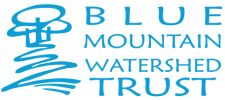Lessons from a Neighbouring Watershed: We Are Not Alone
By Doug Brown, Member of WAG Committee
Sometimes, in the ongoing efforts to sustain our environment, the tasks can seem enormous and even overwhelming. The secret to success, I have learned, is to start small, beginning with one step or project at a time.
The Pine River Watershed Initiatives Network (PRWIN) is using this approach. Originally, the Pine River watershed, south of Kincardine and emptying into Lake Huron, was 93 percent tree covered. The river was clean, full of fish and the surrounding land was level, fertile and inviting. In fact, too inviting! “Progress” and “development” did the obvious and the tree cover became 5 percent as farming flourished. Landowners each took away “just one” wood lot or swampy area and ploughed “just one” more furrow closer to the riverbank to increase productivity. The net result was very poor water quality in the Pine River and windblown soil erosion throughout.
Area residents began noticing serious algae growth along the shoreline at the mouth of the river. Gone were the buffers and tree cover along the riverbank, which used to reduce the amount of nutrients and soil entering the river, in addition to shading and cooling it for fish. And, instead of minor fluctuations as in the past, river levels began to rise dramatically after a rainfall and almost disappear when there was no rain. We had changed the surrounding landmass from a sponge to a table top! Heat, along with nutrients and soil deposited at the river mouth and nearby lakeshore made ideal conditions for algae growth.

All parties — farmers, beach associations, township staff, the conservation authority, public health, a boat club, the Lake Huron Centre for Coastal Conservation and others —met together and formed a steering committee. They undertook assessments, such as regular water sampling. They addressed specific concerns, such as mandatory septic inspections and started an educational outreach program with pamphlets, displays at local fairs, news articles and presentations to classrooms and community groups. They secured sources of funding and found willing groups to do the labour (4H, Lions, students, churches, clubs.) And, perhaps most importantly, willing and visible landowners agreed to take part in initial projects and then went on to talk about their positive experiences with their neighbours and the local press. PRWIN provided partial finances and labour to make it easy and profitable for landowners.
Volunteers working on the Pine River
This all took time. Discussions started in 2000, with the first project underway in 2008. Many projects started with something small and manageable. There has been press coverage of each project and at each site a large descriptive sign has been erected along the adjacent roadside. Tree planting, cattle fencing and crossings, alternative watering holes for cattle, berms, wind shelter belts, buffers, a demonstration area, wetland creations, nitrate filters, ecological restoration projects and stream bank restorations are but a few of the many activities. Most area landowners, noticing the activities and the positive results, have been receptive to getting on board. Tree number 250,000 will be planted this spring.
A lot of effort has been invested by a number of very dedicated people to make this happen. There have been the usual frustrations, but participants are determined to make it fun and enjoyable – BBQ’s and celebrations are all part of the deal. What was initially a bleak picture of environmental degradation is definitely changing for the better. Last summer, swimmers at the mouth of the Pine River found almost no algae to trudge through for a change. Cattle, landowners, swimmers and our grandchildren all stand to be winners.
When you hear of an example of environmental improvement such as this, you cannot help but feel motivated, and you begin to realize that we are definitely not alone! It can happen! It is worth it! Check out www.pineriverwatershed.ca for more information and a short video.


